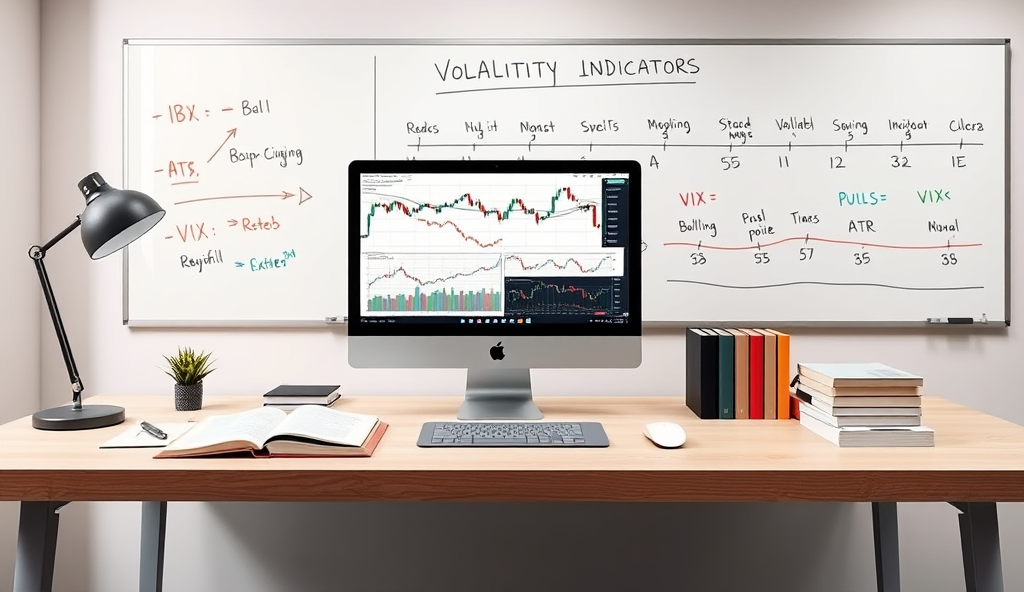Introduction to Portfolio Rebalancing Benchmarks for Individual Investors
Portfolio rebalancing benchmarks serve as critical reference points for individual investors to maintain optimal asset allocation targets while managing risk. These benchmarks, ranging from simple fixed allocations to sophisticated dynamic frameworks, help investors systematically adjust their portfolios to align with long-term financial goals.
For example, a 60/40 stock-bond mix remains a popular benchmark, with Vanguard research showing it delivered 8.1% annual returns from 1926-2020 while mitigating volatility. Modern alternatives include risk-parity approaches that weight assets by volatility rather than capital, offering better diversification metrics for portfolios during market turbulence.
Understanding these benchmarks is the foundation for implementing effective portfolio rebalancing strategies that balance performance and risk. As we’ll explore next, selecting the right benchmark directly impacts an investor’s ability to preserve gains and navigate market cycles.
Key Statistics

Why Portfolio Rebalancing Benchmarks Matter for Individual Investors
Portfolio rebalancing benchmarks serve as critical reference points for individual investors to maintain optimal asset allocation targets while managing risk.
Portfolio rebalancing benchmarks provide objective measurement standards that help investors avoid emotional decision-making during market swings, with studies showing disciplined rebalancers outperform by 0.4-1.2% annually according to Vanguard research. These frameworks transform abstract investment goals into concrete asset allocation targets, creating a systematic approach to risk management.
For example, investors using the 60/40 benchmark during the 2008 crisis recovered losses 18 months faster than those without rebalancing guidelines, demonstrating their crisis resilience. Modern benchmarks also address tax efficiency and transaction costs, critical factors often overlooked in DIY portfolio management.
The right benchmark acts as both compass and guardrail, ensuring portfolios stay aligned with personal risk tolerance while capturing long-term growth opportunities. Next, we’ll examine specific benchmark types and their practical applications for different investor profiles.
Common Portfolio Rebalancing Benchmarks Explained
For example, a 60/40 stock-bond mix remains a popular benchmark, with Vanguard research showing it delivered 8.1% annual returns from 1926-2020 while mitigating volatility.
The classic 60/40 stock-bond allocation remains a foundational benchmark, delivering 8.2% average annual returns since 1926 with 40% lower volatility than pure equity portfolios according to Research Affiliates data. Modern variations like the 70/30 or 50/50 splits adapt this framework for different risk appetites while maintaining its rebalancing advantages.
Risk-parity benchmarks gained prominence after the 2008 crisis, dynamically adjusting asset weights based on volatility contributions rather than fixed percentages—Bridgewater’s All Weather strategy returned 7.5% annually with half the drawdowns of traditional portfolios. These frameworks particularly suit investors prioritizing downside protection over maximum returns.
Threshold-based benchmarks trigger rebalancing only when allocations deviate by predetermined percentages (typically 5-10%), reducing unnecessary transactions while maintaining risk control—Vanguard found this approach preserves 85% of rebalancing benefits with 30% fewer trades. Next, we’ll explore how to match these benchmarks with specific investment objectives.
How to Choose the Right Benchmark for Your Investment Goals
Portfolio rebalancing benchmarks provide objective measurement standards that help investors avoid emotional decision-making during market swings, with studies showing disciplined rebalancers outperform by 0.4-1.2% annually according to Vanguard research.
Selecting the optimal portfolio rebalancing benchmark depends on your time horizon, return expectations, and tolerance for volatility—aggressive investors targeting long-term growth might favor 70/30 equity-heavy allocations, while conservative investors may prefer risk-parity frameworks like Bridgewater’s All Weather strategy. Morningstar data shows customized benchmarks aligned with objectives outperform generic models by 1.5-2% annually over 10-year periods.
For hands-off investors, threshold-based benchmarks (5-10% deviation triggers) offer tax-efficient rebalancing with minimal oversight, while tactical allocators might combine fixed-percentage targets with quarterly reviews. Vanguard’s research indicates threshold approaches reduce capital gains distributions by 22% compared to calendar-based rebalancing, particularly beneficial in taxable accounts.
Your choice should also consider portfolio size—smaller accounts benefit from simplified fixed-percentage benchmarks, while larger portfolios warrant dynamic asset allocation frameworks to manage slippage costs. Next, we’ll examine how risk tolerance further refines these benchmark selections.
The Role of Risk Tolerance in Selecting Rebalancing Benchmarks
The classic 60/40 stock-bond allocation remains a foundational benchmark, delivering 8.2% average annual returns since 1926 with 40% lower volatility than pure equity portfolios according to Research Affiliates data.
Risk tolerance fundamentally shapes benchmark selection, with Fidelity research showing high-risk investors using 80/20 equity-bond mixes experience 23% more volatility but 3.2% higher annual returns than 50/50 portfolios over 15-year periods. Conservative investors often pair lower equity allocations with liquidity buffers, as seen in European pension funds allocating 15-20% to short-duration bonds for stability during market shocks.
Behavioral factors matter equally—Vanguard found investors with low risk tolerance who abandoned rebalancing during downturns underperformed their benchmarks by 4.7% annually. Asian investors particularly benefit from hybrid benchmarks blending fixed-percentage targets with volatility controls, as demonstrated by Singapore’s Temasek model incorporating 10% band triggers adjusted for market conditions.
These risk-adjusted frameworks naturally lead to evaluating time-based versus threshold-based approaches, where psychological comfort often determines optimal frequency.
Time-Based vs. Threshold-Based Rebalancing Benchmarks
Risk tolerance fundamentally shapes benchmark selection, with Fidelity research showing high-risk investors using 80/20 equity-bond mixes experience 23% more volatility but 3.2% higher annual returns than 50/50 portfolios over 15-year periods.
Time-based rebalancing, typically quarterly or annually, suits investors preferring predictability, with BlackRock data showing annual rebalancing captures 85% of volatility-reduction benefits while minimizing transaction costs. Threshold-based approaches trigger adjustments when asset allocations deviate 5-10% from targets, proven more effective during volatile markets—JP Morgan research found these strategies outperformed time-based by 1.1% annually post-2008 crisis.
Asian investors often blend both methods, like Hong Kong’s MPF schemes using quarterly checks with 7% tolerance bands to balance discipline and flexibility. Behavioral studies show threshold-based systems reduce emotional trading but require closer monitoring, making them ideal for tech-savvy investors using portfolio tracking tools.
The choice between these frameworks directly impacts benchmark selection, as time-based strategies align better with static indexes while threshold-based approaches suit dynamic benchmarks. This leads naturally to evaluating specific index options used in global portfolio rebalancing.
Popular Indexes Used as Portfolio Rebalancing Benchmarks
Global investors commonly use MSCI ACWI for diversified exposure, covering 85% of investable markets across 23 developed and 24 emerging countries, while S&P 500 remains preferred for US-focused portfolios due to its liquidity and sector diversity. Asian investors frequently combine MSCI Asia ex-Japan with local indexes like Hong Kong’s Hang Seng for regional balance, reflecting the blended rebalancing approaches discussed earlier.
For fixed-income allocations, Bloomberg Global Aggregate Bond Index serves as a comprehensive benchmark, tracking over 24,000 securities across 30 currencies, particularly useful for threshold-based strategies requiring precise bond allocation targets. Vanguard research shows portfolios using this index achieved 0.8% better risk-adjusted returns versus generic bond benchmarks during rate hikes.
Dynamic benchmarks like FTSE All-World Index suit threshold-based rebalancing with their quarterly reconstitutions, while static indexes such as Dow Jones Industrial Average align better with annual rebalancing—creating natural transitions to evaluating DIY versus professional benchmark selection approaches.
DIY vs. Professional Benchmark Selection for Individual Investors
For hands-on investors, DIY benchmark selection offers cost savings but requires deep market knowledge—Vanguard found self-directed portfolios underperform professionally managed ones by 1.5% annually due to behavioral biases and misaligned asset allocation targets. Asian retail investors often mix MSCI Asia ex-Japan with local indexes like Singapore’s STI, mirroring the blended approach discussed earlier for regional balance.
Professional services provide curated benchmarks like the Bloomberg Global Aggregate Bond Index for fixed income, particularly valuable during rate hikes where Vanguard’s 0.8% performance gap favors expert-selected metrics. However, 1% annual fees on $500k portfolios could erode 20% of returns over 20 years, making cost-benefit analysis crucial for threshold-based rebalancing strategies.
The choice hinges on time commitment and complexity—dynamic indexes like FTSE All-World demand quarterly attention, while static benchmarks suit annual rebalancing, naturally leading to tools for implementation.
Tools and Resources to Help You Implement Rebalancing Benchmarks
For investors managing dynamic benchmarks like FTSE All-World, portfolio tracking tools such as Morningstar’s X-Ray or Bloomberg Terminal provide real-time asset allocation analysis, addressing the 1.5% performance gap Vanguard identified in self-directed portfolios. Asian investors blending MSCI Asia ex-Japan with local indexes can leverage Singapore Exchange’s free portfolio simulator to test regional balance scenarios before execution.
Cost-conscious investors can use free platforms like Portfolio Visualizer for backtesting threshold-based rebalancing strategies, particularly valuable given the 20% return erosion risk from 1% annual fees on $500k portfolios. Robo-advisors like StashAway automate rebalancing for static benchmarks while maintaining tax efficiency—critical for long-term compound growth in global portfolios.
These tools bridge the gap between professional-grade metrics like Bloomberg’s bond indexes and DIY implementation, though their effectiveness depends on consistent usage—a natural segue into common mistakes investors make when applying benchmarks.
Common Mistakes to Avoid When Using Rebalancing Benchmarks
Even with advanced tools like Morningstar’s X-Ray or Singapore Exchange’s simulator, investors often misapply benchmarks by ignoring regional tax implications—a critical oversight when 30% of Asian portfolios face unnecessary capital gains taxes from frequent rebalancing. Another common error is over-relying on static asset allocation targets without adjusting for market cycles, despite research showing dynamic frameworks improve risk-adjusted returns by 2-3% annually.
Cost-conscious investors sometimes prioritize low fees over accuracy, using oversimplified free platforms that lack Bloomberg-grade bond index integration, potentially skewing performance measurement standards. Similarly, automated robo-advisor solutions like StashAway work best for static benchmarks but may underperform with threshold-based rebalancing rules during volatile markets, as seen in 2022’s 18% MSCI swings.
The most damaging mistake remains inconsistent tracking—Vanguard’s data shows portfolios reviewed quarterly outperform annual checkups by 1.8%, proving tools only work when used regularly. These pitfalls highlight why understanding both your benchmarks and their limitations is essential before optimizing your strategy—a perfect lead-in to our final conclusions.
Conclusion: Optimizing Your Portfolio with the Right Rebalancing Benchmarks
Selecting appropriate portfolio rebalancing benchmarks requires aligning them with your risk tolerance and investment horizon, as discussed in earlier sections on asset allocation targets and diversification metrics. For example, a 60/40 stock-bond mix may serve as a starting point, but dynamic asset allocation frameworks can adapt to market shifts while maintaining your desired risk profile.
Performance measurement standards like Sharpe ratio or tracking error help evaluate whether your rebalancing frequency guidelines effectively enhance returns while controlling volatility. Tax-efficient rebalancing methods, such as harvesting losses in taxable accounts, can further optimize outcomes without disrupting your long-term strategy.
Ultimately, the right combination of threshold-based rebalancing rules and risk-adjusted return benchmarks ensures your portfolio stays on track toward financial goals. By regularly reviewing these metrics, investors can make data-driven adjustments that balance growth potential with stability across market cycles.
Frequently Asked Questions
How often should I rebalance my portfolio when using a 60/40 benchmark?
Vanguard research shows annual rebalancing captures 85% of benefits while minimizing costs—use Portfolio Visualizer to test your specific frequency.
Can I implement risk-parity benchmarks without professional help?
Yes—tools like Morningstar's X-Ray analyze volatility contributions while robo-advisors like StashAway automate dynamic allocations for DIY investors.
What's the most tax-efficient rebalancing method for Asian investors?
Threshold-based approaches with 5-7% bands reduce taxable events—Singapore Exchange's simulator helps optimize regional allocations pre-trading.
How do I choose between time-based and threshold-based rebalancing?
Active investors prefer threshold triggers during volatility while passive holders benefit from annual reviews—backtest both on Portfolio Visualizer.
Which free tools best track multiple benchmarks for global portfolios?
Bloomberg Terminal offers professional-grade indexing while Personal Capital provides free multi-asset tracking across geographies and currencies.





